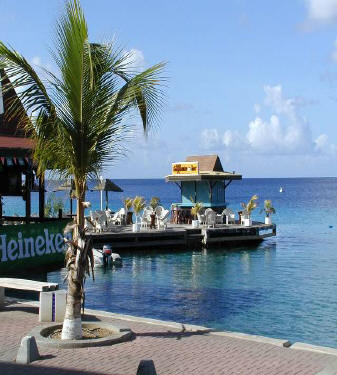|
||||||
|
Cities and attractions
Caracas
Situated in a picturesque valley on the north coast, Venezuela's capital is a bustling metropolis of nearly 5 million inhabitants. Fast, progressive and cosmopolitan, the city is now highly 'Yankeefied,' retaining little of the character of its colonial roots. While it boasts some of the most impressive modern architecture in South America, Caracas is also home to a vast expanse of ranchos - sprawling slums of tin sheds and cardboard boxes covering the surrounding hills that are the product of the uncontrolled surge of postwar immigration.
Sights include Plaza Bolívar, with its 17th-century cathedral; the Casa Natal de Bolívar, birthplace of Simón Bolívar; Santa Capilla, a 19th-century neo-Gothic church modeled on Paris's Sainte Chapelle; the monumental Palacio de Miraflores, palace of former leader Joaquín Crespo; the sacred Panteón Nacional, where many eminent Venezuelans are interred; the Petares district, which has retained its historic colonial character; and the modern, bustling Parque Central, which provides a taste of modern Caracas.
Most of the budget hotel accommodations are in the less salubrious suburbs, which are not always safe, especially at night. The best is probably Sabana Grande. Be sure to always keep your wits about you, as mugging and petty theft have become rife in recent years. |
|
||
|
Nightlife tends to be centered around the districts of Las Mercedes, El Rosal, La Floresta and La Castellana. Enjoy a beer at the Greenwich Pub, or catch some jazz at the Juan Sebastián Bar, one of the city's few authentic jazz venues.
Río Orinoco
The third-longest river in South America, the Orinoco covers about 2150km (1333mi), from its source near the Brazilian border in the south of the country to its wide, flooded delta on the northeast coast. The myriad forested islands that make up the delta are home to the Warao people, who live on the riverbanks in houses on stilts, travel mostly by canoe and earn their livelihood from fishing. At the reaches of the Lower Orinoco lies the site of Ciudad Bolívar (formerly Angostura), a hot city that boasts a glorious history and still retains much of its colonial charm. It was here that Simón Bolívar set up his base for the final stage of the War of Independence, and the town became the provisional capital of the country prior to liberation from the Spanish.
Most visitors to Ciudad Bolívar will be en route to Canaima, the spectacular town located on the Río Carrao just below the stretch of river with a chain of seven magnificent waterfalls. Nearby, on a tributary, is Salto Angel (Angel Falls), the world's highest waterfall, with an uninterrupted drop of 807m/2647ft (16 times the height of Niagara Falls). Continuing southeast brings you to the fascinating landscape of the Gran Sabana, with its tepuis (flat-topped mountains) and simas ('sink-holes' of jungle up to 350m/1148ft wide, surrounded by sheer cliffs).
The Andes
The verdant mountains of the Sierra Nevada de Mérida are the northernmost tip of the Andes range, and lie in the northwestern reaches of Venezuela. Dotted with small villages whose inhabitants still follow a traditional lifestyle, the mountain also sports trails that reward the more adventurous and energetic traveler with stunning views of the snowcapped peaks. The pleasant, friendly town of Mérida, nestled in the mountains just 12km (7mi) from the country's highest peak, Pico Bolívar, is one of Venezuela's most popular tourist destinations.
The Amazonas region in the south of the country is thick with tropical rain forest, crisscrossed by rivers, and home to a number of isolated Indian tribes. Tours up the Orinoco, Sipapo or Autana rivers and deep into the Venezuelan Amazon can be arranged from the hot but pleasant town of Puerto Ayacucho.
|
|||


